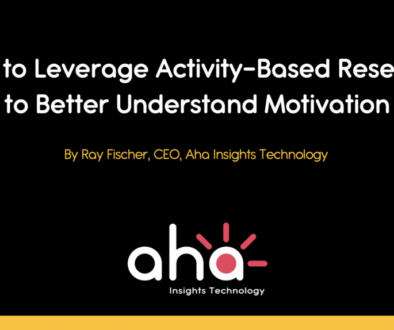5 Online Qualitative Consumer Research Trends for 2017
It is no surprise that the world of online qualitative research is evolving at a rapid pace with technology playing a key role — so making predictions is always tricky. But after conducting hundreds of online qual consumer and B2B studies in the last year, there are some tangible trends that are rising to the surface that can benefit both marketing researchers, and their corporate clients.
Here is my take on what is ahead for 2017.
1. Respondents Will Continue to Amaze
It never ceases to amaze me how much respondents will engage in marketing research studies. In the “early days” of online qualitative, we all thought it was pretty cool for respondents to answer a series of open-ended questions; then came picture uploads. Now we are asking them to take on more complex exercises, including storytelling and symbolic collaging; things they are not necessarily trained to do aside from maybe some Art or English classes back in their school days. We are also presenting them with these thought-provoking and emotionally engaging activities in a less familiar environment. Over the course of thousands of research studies, we have consistently found they love these challenges and that they engage in them with passion, and deliver amazing insights, time after time. With the development of better online qual study design and more intuitive activities, we believe the results will also continue to amaze researchers and clients alike.
2. Recruiting Options Will Evolve
Our human nature always drives us towards faster, cheaper, and better without sacrificing quality. It’s not always that easy when it comes to recruiting for multi-day online qual studies. My personal preference from a quality standpoint is the traditional focus-group style database recruit, but client budgets are not always conducive to this more expensive approach. A number of established and start-up panel providers have made headways into building panels with qual-capable respondents. The key is forecasting the sample over-recruit to deliver the desired quality completes. Over-delivery means you’ve blown the budget. Under-delivery equals a disappointed client. In 2017 I expect the precision to improve without having to micro-manage the recruiting/onboarding process, making things faster and cheaper when time/budget requires it.
3. Push for More Mobile
In 2016, I’ve increasingly heard from clients that they want their entire qual studies to be mobile/smartphone-enabled. In theory this is a very tech-forward modern approach, however, you really don’t always want everything to be mobile. If the mission is “in-the-moment” video and pictures — fantastic. Closed-ended questions — check. Open ends —now here is where you want to use your best judgment. There is a marked difference in quality and depth on open-ends between desktop/laptop devices and smartphones, so choose your use of open-ends on mobile activities carefully. If brief responses are what you are looking for, then go for open-ends, but if you want storytelling or deep emotion-rich responses, best to direct those to the computer. So, mobile qual will definitely grow in 2017, just choose your activities wisely to achieve your desired results.
4. Analytic Options Get Better
I continue to be intrigued by the possibilities of text analytics and I am hopeful they will become a little easier to use for the researcher who doesn’t work with the tools everyday. We’ve seen some cool advancements in Excel exports (pictures accompanying responses, for instance) but it would be awesome to see some text analytic tools become a bit more mainstream/DIY for researchers who might use them only a few times per year. DIY Word Clouds are there, but here’s hoping more advanced text analysis tools (including sentiment) evolve in 2017.
5. Tech Gadgets and Online Qual
Ten years ago we were still sending out FLIP cameras to video record “in-the-moment” occasions. It was cutting edge back then, and very expensive, and then bam! smartphone proliferation quickly disrupted and improved our ability to capture respondent video. Game changer. Now we see these super cool devices such as Amazon’s Echo, Apple’s Siri, and Google Home quickly integrating their way into our lives. Do they have a role in tech-based research methods? Imagine the possibilities. No prediction on where these devices might take us but sure is fun to think about.
So there you have my thoughts on 2017. Would love to hear yours. Please feel free to email me at rayf@ahaonlineresearch.com or call 810-599-9440 to discuss predictions, study design, or simply talk shop.




